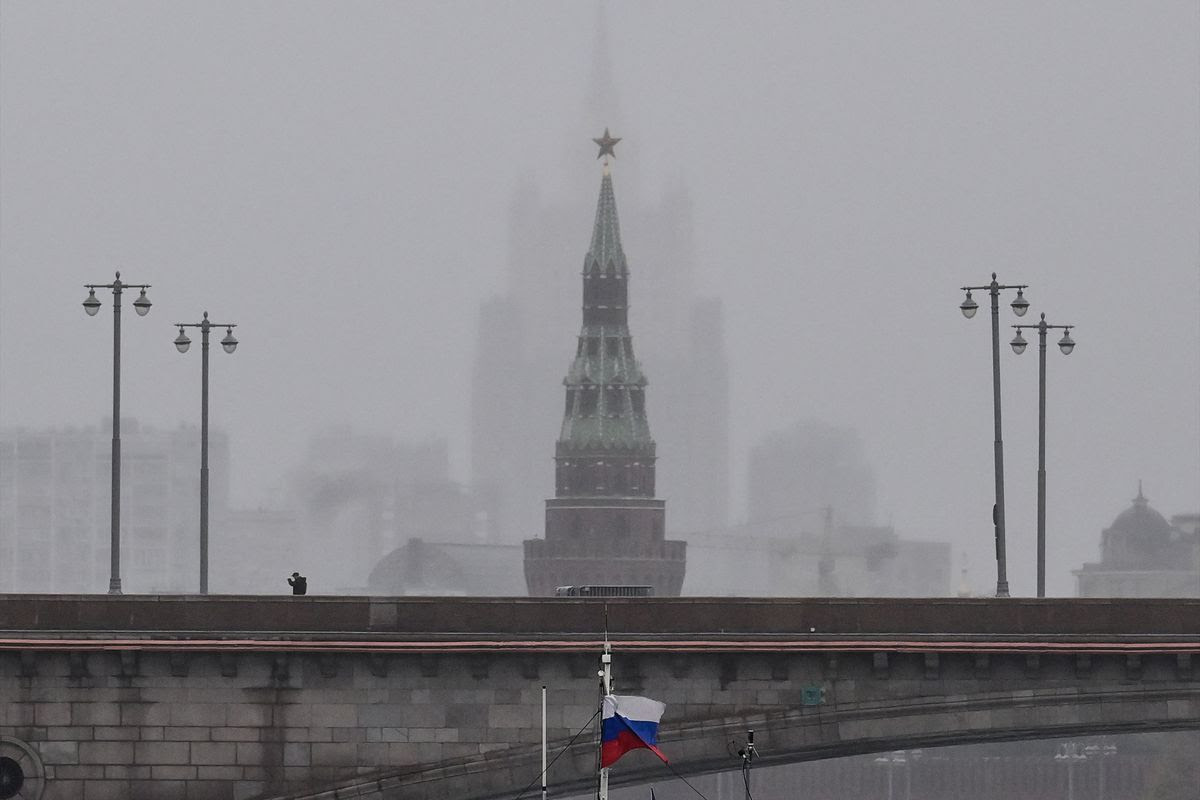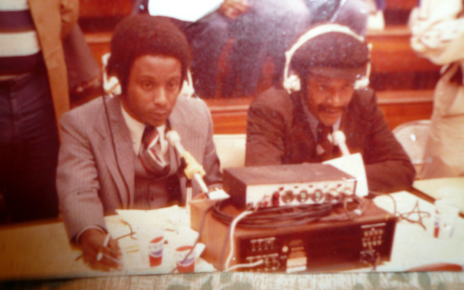/cdn.vox-cdn.com/uploads/chorus_image/image/71493585/1243717079.0.jpg)
A Russian pedestrian walks along a bridge over the Moskva River in front of the Vodovzvodnaya tower of the Kremlin and the Russian Foreign Ministry headquarters in central Moscow on October 4, 2022. Yuri Kadobnov/AFP via Getty Images
It’s a rough year to be a high-profile Russian: After nearly eight months of war in Ukraine, the Russian military is reeling and on its back foot; sanctions continue to squeeze the country’s economy and elite — and at least 15 Russian businessmen and executives have died in apparent accidents or by suicide, including a number of Putin allies.
The victims range from an executive with Gazprom, a major state-owned oil company, to the managing director of a state-run development corporation. The causes of death range from unremarkable — a stroke, for example — to lurid, such as death by toad poison in a shaman’s basement.
Combined, the sheer number of deaths, as well as the prominence of the dead and a long history of suspicious demises in Putin’s Russia, have raised questions about whether something other than ordinary bad luck is at fault.
According to Stanislav Markus, an associate professor at the University of South Carolina business school and author of Property, Predation, and Protection: Piranha Capitalism in Russia and Ukraine, it’s a near certainty. “We can almost certainly rule out the official explanation of the deaths as suicides or poor health,” Markus told me via email. He’s not alone; theories vary — and generally don’t feature some grand conspiracy by the Kremlin — but a number of Russia experts see “more than just randomness” in the deaths, as Syracuse University professor Brian Taylor, who specializes in Russian politics and is the author of The Code of Putinism, put it to me in an interview.
The string of mysterious fatalities began with the death of Gazprom Invest transport director Leonid Shulman in late January; a suicide note was reportedly found near his body, and the death was investigated as such.
Another Gazprom executive, Alexander Tyulakov, died in February, also by suicide, as did Ukraine-born billionaire Mikhail Watford, who was found dead in his house in the United Kingdom.
Vasily Melnikov, the founder of the medical supplies company MedStom, was found dead in March, in a possible murder-suicide along with his wife and his two children. Another alleged murder-suicide, that of former Gazprombank executive Vladislav Avayev and his wife and teenage daughter, followed in April, just one day before former oil and gas executive Sergei Protosenya was also found dead along with his family in a third possible murder-suicide incident.
Avayev and his family were shot to death, according to news reports, while Protosenya was found hanged and his wife and daughter fatally stabbed.
Other subsequent deaths, including multiple deadly falls — down stairs, from a window, from a moving boat — have also prompted speculation, though there is no overt evidence of foul play.
Most recently, Pavel Pchelnikov, a manager with the Russian Railways subsidiary Digital Logistics, died by suicide late last month; shortly before that, on September 21, a former Russian aviation expert, Anatoly Gerashchenko, fell to his death “from a great height” and down multiple flights of stairs, according to a report in the Daily Beast citing Russian media.
Of the dead, a number have links to Gazprom and Novatek, Russia’s two largest natural gas companies; two others were affiliated with Lukoil, also a major energy company in Russia.
There are reasons to doubt the official stories
In several cases, the family and friends of the dead have already raised questions about their deaths, or rejected official conclusions of suicide.
In a statement after Protosenya’s death, for example, Novatek, his former employer, said that speculations about his death “bear no relation to reality,” an apparent reference to early reports in Spanish media describing it as a murder-suicide. Protosenya’s son, Fedor, also told the Daily Mail that his father “could never do anything to harm them [his family]. I don’t know what happened that night but I know that my dad did not hurt them.”
Igor Volobuev, also a former Gazprombank executive, told CNN he does not believe Avayev’s death was truly a murder-suicide.
“He was in charge of very large amounts of money. So, did he kill himself? I don’t think so. I think he knew something and that he posed some sort of risk,” Volobuev said.
There’s something to these suspicions — political assassinations, after all, aren’t exactly unusual in Russia. Assassination by purported suicide is virtually a category to itself: As Ian Bremmer, president of the Eurasia Group, remarked on Twitter in September, “for those keeping track at home, 12 ‘threw himself from window/shot himself 7 times in the head’ russian oligarch deaths this year so far” (a number that has since increased).
for those keeping track at home, 12 “threw himself from window/shot himself 7 times in the head” russian oligarch deaths this year so far pic.twitter.com/3wPM4dbL2K
— ian bremmer (@ianbremmer) September 14, 2022
As recently as two years ago, Alex Ward highlighted a similar trend in a different sector of Russian society in a story for Vox: coronavirus doctors dying after falling from high windows early in the pandemic. Those deaths were equally unexplained, but as Ward wrote at the time, murder “may not be completely out of the question.”
That ambiguity is a common theme around deaths in Russia; though there is rarely clear-cut evidence, questions surrounding the deaths of Putin critics stretch back nearly two decades.
Three experts I spoke with told me that was equally the case here — though they stressed the degree of uncertainty surrounding the deaths.
“The number of [deaths] seems higher than random chance would suggest, but that doesn’t mean that it’s all part of the same story,” Taylor said. “Some of them really could be suicides or accidents. Some of them could be murders.”
So what really happened?
The short answer is we don’t know — the deaths are strange on their own and outright suspicious as a cluster, but the throughline, if there is one, remains a mystery. That being said, there are a few possible explanations.
Suicide and accident — really
According to the experts I spoke with, the sheer volume of accidental deaths and suicides so far is enough to mean that this is unlikely to be the true explanation in every case. It’s not impossible, however; sometimes a suicide is just a suicide and an accident is just an accident, no matter how odd.
There are certainly factors that point in that direction, even beyond official findings in the deaths. Specifically, as Ward pointed out in May 2020, Russia has the third-highest suicide rate in the world, according to the World Health Organization. The data is now several years old — the last full set is from 2016 — but that year, about 122 people died by suicide each day in Russia, equal to more than 44,500 deaths a year.
Additionally, according to Peter Rutland, a Russia expert and professor of government at Wesleyan University, Russia’s system, and perhaps especially its business community, is under substantial pressure due to the war.
“These are incredibly stressful times, right?” Rutland said. “Businesspeople have seen their chances to visit Europe frozen, their assets frozen, their yachts seized, the value of the shares in their companies.”
Those factors, Rutland told me, could conceivably provoke a spate of suicides.
“If businesspeople had loans that were collateralized with those assets, or which required some kind of business income, which has just disappeared because of the sanctions, you can only imagine that that would drive people to suicide,” he said.
Of course, that doesn’t account perfectly for the murder-suicides, or the number of fatal accidents. But it’s not impossible that at least some of the deaths are no more than what they seem on the surface.
The long arm of the Kremlin
One of the most dramatic and often-speculated-about explanations is that the deaths are really killings — carried out at the order of the Kremlin and Russian President Vladimir Putin.
As Bill Browder, a onetime investor in Russia turned Kremlin critic, told the Australian Broadcasting Corporation (ABC) this month, “when people of all the same industry die that way, it looks to me like what I would call an epidemic of murder.”
According to ABC’s Samantha Hawley and Flint Duxfield, Browder “told the ABC News Daily podcast he had little doubt the deaths of the Russian oligarchs — predominantly from the oil and gas sector — have come at the orders of the Kremlin.”
Under Browder’s theory, as he explained it to ABC, the pressure of sanctions has created a financial crunch for Putin, and the deaths of businessmen are a particularly brutal way to revive streams of funding for the conflict — particularly from Russia’s oil and gas industry.
“I would suspect that this guy said ‘no’ and then the best way of getting that flow of cash is to kill him and then ask his replacement the same question,” Browder told ABC.
It’s a tempting answer, particularly given Putin’s long history of assassinating or attempting to assassinate dissidents, such as Alexei Navalny, who was poisoned with the Russian nerve agent Novichok in 2020 and has since been imprisoned in Russia. It’s also something Browder is familiar with — his lawyer, Sergei Magintsky, died in a Russian prison in 2009 after uncovering apparent large-scale fraud by the Russian government.
However, Taylor told me, it’s not the most likely explanation in this case.
“It’s a big leap from saying yes, there’s been a campaign of repression against internal opposition going back for a long time, and evidence of some high-profile people being targeted by the state, to saying everyone who’s killed mysteriously was killed either because of their business dealings with Putin or their criticism of the state,” Taylor said.
Fiona Hill, a former Russia specialist on the National Security Council staff, agrees. “Not every unexplained death in Russia is the KGB or the GRU bumping someone off,” she told Politico Magazine in August regarding the apparent suicide of Dan Rapoport, a Washington, DC-based Kremlin critic who previously did business in Russia.
Internal business pressures turned deadly
That leaves a third theory, one that both Taylor and Rutland indicate is far more likely than either a Kremlin-directed campaign of assassinations or a spate of genuine accidents and suicides.
Specifically, the recent run of deaths among Russia’s business elite could well be disguised killings — but the killings may be a product of Russia’s tangled political and economic structures, which are newly under pressure from Russia’s war in Ukraine, more than of any specific, overarching agenda.
According to Taylor, the deaths could have more to do with “shady business, attempt to cover tracks, attempt to wipe out a competitor, trying to maybe get rid of someone who’s inconvenient at a time when there’s a lot of pressure on state-affiliated companies, especially in the oil and gas sector, but also in the defense sector.”
Markus agrees, noting in an email that “there are competing influential clans” within the Russian state “that span state institutions and private or state-owned firms.”
“So far these clans have been loyal to Putin, but this loyalty has not reduced their predatory appetites,” Markus told me. “From the clans’ viewpoint, the current situation has led to (1) lower cash flows available for diversion or theft; and (2) less certainty in Putin’s future as the ultimate leader of Russian kleptocracy. Hence, clans may be settling their scores and competing more viciously — which could involve murders in question — without this being a centralized Kremlin effort.”
That explanation also makes more sense than the Kremlin-directed conspiracy theory, given the cross section of Russia’s business class that’s turned up dead. Though there are some common linkages — ties to energy companies, for example — some experts, such as Mark Galeotti, the author of the upcoming book Putin’s Wars: From Chechnya to Ukraine, have pointed out that coverage of the deaths can paint with an overly broad brush.
“When did the death of the former rector of a technical university become the (implied: mysterious) end of a ‘Putin ally’? (Everyone dying in [Russia] now is elevated to oligarch or ally),” Galeotti tweeted after the death of Geraschenko in September.
When did the death of the former rector of a technical university become the (implied: mysterious) end of a “Putin ally”?
(Everyone dying in now is elevated to oligarch or ally)Putin ally dies after falling down stairs on day of Russia mobilizationhttps://t.co/
NIJ9faFZjD — Mark Galeotti (@MarkGaleotti) September 23, 2022
Significantly, both Taylor and Rutland emphasize that there’s still a great deal of uncertainty around the deaths. However, under the third and, according to them, more likely theory, continued pressure on Russia’s economy could well accelerate the trend.
Violence as a way of doing business has been “deeply normalized going back to the 1990s,” Rutland said. “And so as the regime enters what could be its death throes, or certainly it’s under huge pressure, you can imagine that there’s gonna be this — well, it’s not yet a bloodbath, but you can imagine that the faction fighting will get even more desperate.”
There are no satisfying answers to be had, at least for now. Recent history supports the idea that such deaths are something Putin would be fully capable of, but he lacks a clear motive that connects them all; as some close Russia watchers have observed, Russia’s cutthroat business culture is at least equally likely to be culpable as a repressive Kremlin. In both cases, there’s a distinct dearth of evidence — but the speculation only underscores the overlapping brutality of Russian business and Putin’s regime.










